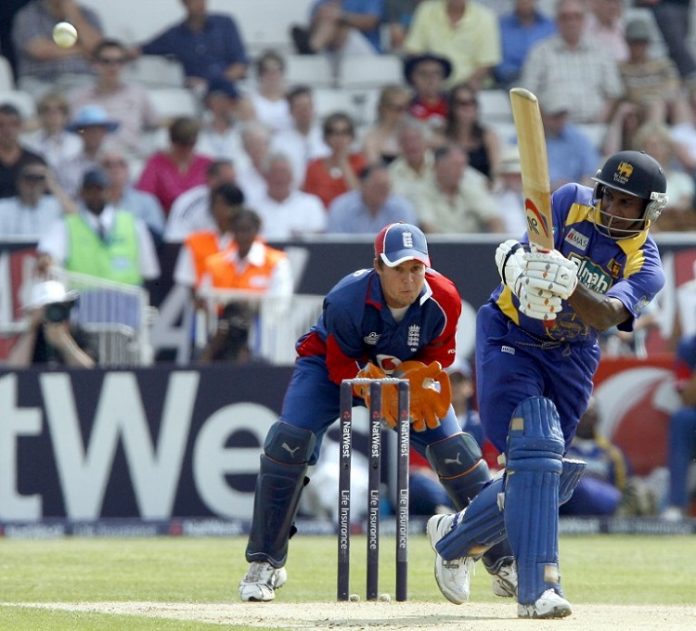Touring England, the country that gave birth to the great game of cricket, is a unique experience. To watch your team doing well makes it even more special. Sri Lanka’s best tour to England remains the 1998 series when Arjuna Ranatunga’s side won their first ever Test match in the country and won the tri-nation Emirates series involving the hosts and South Africa.
They were equally dominant during the 2006 tour where they squared the Test series 1-1, won the one off T-20 International and whitewashed England 5-0 in the ODIs. That was some tour.
With Marvan Atapattu pulling out of the tour due to a back injury, Mahela Jayawardene was named as captain. So forceful was Mahela’s captaincy that he was retained as the skipper after the tour and carried on in the job for three more years with Marvan playing under him.
Playing four warm-up games ahead of the first Test at Lord’s helped as Sri Lanka by then had spent three weeks in England and had acclimatized to the conditions well.
The tourists played out of their skins to draw the opening game against many odds.
This was the England side that had regained the Ashes the previous summer after a severe drought that had lasted for decades. When England posted 551 for six declared in the first innings and bowled out Sri Lanka for 192 runs only one result was possible.
With a lead of more than 350 runs, England enforced the follow on and when Sri Lanka finished day three on 183 for three in their second innings, an early finish was on the cards on day four.
Soon England pundits started questioning the value of playing three Tests against Sri Lanka. Then came some remarkable rearguard action by the Sri Lankans who batted out the remaining two days to earn a well-deserved draw.
The fight back was inspired by Mahela and he was well backed up by the lower middle order. T.M. Dilshan, Farveez Maharoof, Nuwan Kulasekara and Chaminda Vaas all posted half-centuries and more importantly stitched valuable partnerships, not throwing in the towel. In the end, Sri Lanka finished on 537 for nine.
They went down fighting in the second Test which they lost by six wickets in Birmingham, but bounced back to win the final Test by 134 runs in Nottingham to square the series.
In the ODIs that followed, they were so dominant that England never came close to winning any games.
The final game in Headingley was the icing on the cake. When England posted 321 batting first, they had every reason to believe that they had done enough to avoid a 5-0 humiliation.
But Sanath Jayasuriya made the bowling look ordinary. Prior to the tour, there were signs that his game was on the wane but not on this tour. He was at his awesome best once again and continued to thrash international sides for three more years.
Chasing a massive target 322, Jayasuriya put the bowling to the sword, smashing 152 in just 99 deliveries that contained 20 fours and four sixes. The 286-run stand between Jayasuriya and Upul Tharanga remained the highest partnership for the first wicket until two months ago.
The press had to make a call on the Player of the Series. There were quite a few contenders. But so forceful was Jayasuriya’s blitz in the final game that he was unanimously voted as Player of the Series.
It was a sad day for English sports overall. The same day that Sri Lanka handed England a 5-0 hammering, local hero Fred Truman passed away. To rub salt into the wounds, England’s football team also crashed out of the FIFA World Cup losing to Portugal on penalties.
The whitewash was remarkable as Sri Lanka missed the services of their main weapon Muttiah Muralitharan, who had to return home for personal reasons.
Sri Lanka carried on the momentum to their future assignments. They beat South Africa in a home series a month later with the SSC Test producing a World Record 624 run stand, the highest for any wicket, between Mahela and Kumar Sangakkara.
Later that year, they won a Test match in New Zealand and were in red hot form in the World Cup a few months later. Sri Lanka went onto reach the finals of the 2007 edition of cricket’s showpiece event in the Caribbean.
Tom Moody, the man at the helm had done a remarkable job adding self-belief to the Sri Lankan side and bowed out after the World Cup. His impressive coaching stint lasted only two years but he left a legacy that will be remembered for many years to come.
In 2005, India and Sri Lanka were looking for a new Head Coach at the same time. Both were interested in Greg Chappell and India as usual had their way.
He was not a tactically brilliant coach, but a practical man. He ran the show his way. If Sri Lanka were to come out of their current mess, they need to give Chandika Hathurusingha the license to do it his way.























